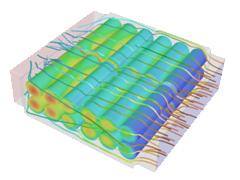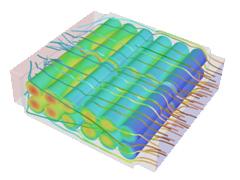EV Battery Design Challenges Tackled by ANSYS CAE
July 10, 2012

By participating in a government initiative aimed at leveraging advanced simulation software, ANSYS is joining the legions of scientists, engineers, and startups trying to advance electric and hybrid vehicle technology designs.
General Motors has awarded ANSYS a subcontract to incorporate new and current battery models into its CAE software to shorten design cycles and address some of the key challenges hampering EV battery development, including cost, service life, capacity (energy storage per unit mass and volume), safety, and operating temperature.
Our own Chuck Murray has been adeptly reporting on the setbacks that have plagued EV battery development, from spontaneous fires to product recalls, not to mention the consistent accusations by market watchers of exorbitant pricing. As Chuck reports, given the complexity of the technology, the reality is that EV battery development is "just hard, slow work."

Through this partnership, ANSYS and a host of other players are hoping to crack the code on some of the core challenges and accelerate an onerous and painstakingly slow development cycle. The US Department of Energy initiated the Computer Aided Engineering for Electric Drive Vehicle Batteries (CAEBAT) program in 2010 because design and simulation tools were lacking in functionality in this area and thus were not as widely adopted for battery development as they are for more conventional vehicle components.
GM, the National Renewable Energy Lab (NREL), and ESim have been working to leverage engineering simulation technology to optimize EV and hybrid battery performance. The automaker brought in ANSYS to serve as one of the teams developing battery models.
The CAEBAT program is intended to incorporate new and current models into a battery design software suite. Lewis Collins, development director at ANSYS, told us that a variety of teams are working on battery models at several dimensional levels or "scales," and there is an open architecture being mapped out with an eye toward making the models interoperable.
About the Author(s)
You May Also Like
.jpg?width=300&auto=webp&quality=80&disable=upscale)


